Building background is often underrated, but I’m here to tell you– it is SO worth a little extra time spent.
I was watching the movie White Tiger on Netflix this past week. I was fully absorbed by the plot line, characters, and cultural themes. When my husband walked in halfway through the movie, my first thought was: There is no WAY I’m letting him sit down and watch the rest of this awesome movie with me without me giving him a run-down of what’s happened so far!
I bet you’ve felt the same way, when you can’t stand leaving someone with an incomplete, unfulfilled experience of something great. When we enter into things with little understanding of the context, and little experience of the concepts involved, it can leave us frustrated and disillusioned. For our students, it could result in them shutting down and losing interest in a lesson. 😬
If you read nothing else, tuck this tidbit away:
Every bit of energy you put into building background knowledge with your students will pay huge dividends in their comprehension of what you’re teaching. It is WORTH it to give them this valuable boost.
Priming them for new learning. Giving them something to go on. Slowing the train down for a hot second, so they can jump on too.
What is Background Knowledge?
Every experience we have in life builds background knowledge. We observe, we learn, we build understandings of how the world works. We gain all this from our surroundings. Our culture. Our communities. And yep, our education.
As teachers (myself included, of course) we make assumptions all the time. It’s okay…We can’t know everything about every student. But often we think we know…what they know. In the rush of executing a lesson, we forget to take a second to consider: Have my students all seen this before? Been there before? Heard of this? Learned that? We jump into a reading passage, an instructional video, or a game.
But maybe Isabella hasn’t ever seen people play baseball, because she grew up in a community where soccer is king. Maybe Hamid has never heard of the Civil Rights movement, so he’s confused by why a woman got in trouble for sitting on a bus. Perhaps Teo has never been inside a theater….You get the picture. We should frequently ask “What is background knowledge that my students already have, OR don’t have yet, which is vital to their understanding of our new content?”
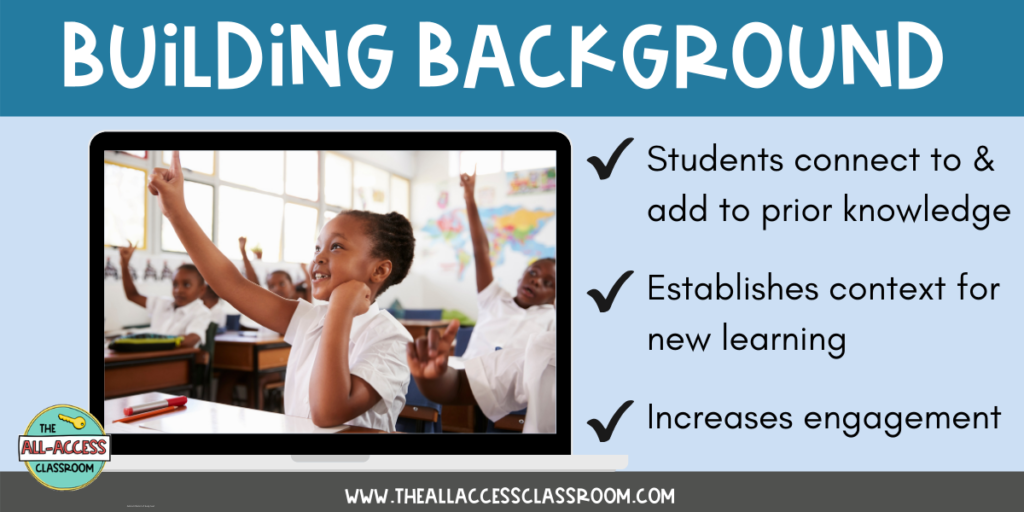
How can we “assumption-proof” our lessons? How can we encourage students to connect, engage, and gain confidence needed for participation? Here’s what has worked in my classroom.
The AAA Method
So here’s a simple routine to try: Activate, Assess, Address
- Activate prior knowledge. You first want to set kids up in an activity that is comfortable, fun, not stressful. You want to give them opportunities to show you what they already know.
- Assess students’ grasp of essential understandings. Ask, “What do they kinda need to have in place so that they’ll comprehend the new learning? What would help “set the stage” for them? Who might need a little extra explanation of things?
- Address the areas needing a bit of “foundation laying.” This could be as simple as pulling a photo up on the screen and sharing some important concepts. It could be a read-aloud that touches on related themes. Playing a song from a certain era. Throwing up a quick timeline. Helping students make a connection to an aspect of their culture. Let your teacher intuition lead the way.
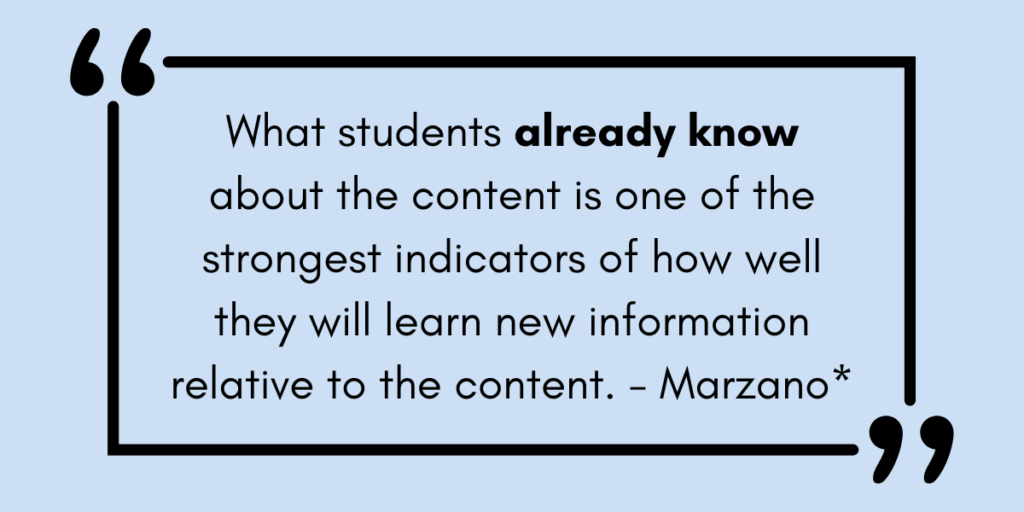
If you need some inspiration, here are some of my favorite building background activities!
5 Activities for Building Background Knowledge
KWL Chart
The KWL chart is like an old can opener in the back of your kitchen drawer: It’s old, but you know how to use it, and it works well to get the job done. KWL charts have never lost their charm for me. Use this graphic organizer to guide students in discussing what they KNOW, WANT TO KNOW or WONDER, and later, what they LEARNED. Don’t forget to give students some low-stress time to chat with others about what they know, before a blind ask. I wanted to spice up the traditional KWL chart, and make a digital version as well, so I added my own variations.
Gallery Walk
So. Fun. I first experienced a gallery walk as part of a professional development session, and loved it. It’s great for English learners, because they can get a lot of input and background on a topic, in a comfortable environment. You will post an intriguing photo or artifact somewhere in the room (you may also choose to put out several and have students rotate). The kids will spend some time with their group, posting their comments and reflections: What do I see/notice/wonder? By the time the whole group has shared their thinking, all kinds of crazy background building will have taken place! For the win!
Anticipation Guide
This graphic organizer is a fun (and quick!) way to pique students’ interest in a topic and show you what their prior knowledge is like. Think of a handful of statements related to your topic. Students will check “Agree” or “Disagree” next to each statement. Try to phrase each in such a way that the students have to do some thinking or opinion-making in order to decide if they agree. (For example, a not great statement: “The moon is round.” vs. a Better statement: “There are lakes on the moon.”)
“Unique Ideas Only” Game
I forget where I learned this one, but it’s fun. State the main topic or concept to the class. Give each small group a big piece of paper. When you say “go,” they have a few minutes to write down everything they collectively know about the topic. Then, you go group by group, and they each share one item from their list. You add the ideas to your “master list” at the front of the class. (They have to listen and cross off items if another group shares the same idea…they can’t repeat items!) The winning team is the one with remaining items on the list after the others have “used up” all of theirs!
Visual Aids
This is probably the simplest strategy, but just as helpful as you introduce a lesson or unit. Take five minutes on Google Images or Pixabay, and print out images related to the content. Discuss them, label them, refer to them….or just tape ‘em up and leave them if that’s all you have time for! It’ll help build a real-world context for learning.
You’ll find some of the above activities in the Building Background Knowledge Bundle resource here.
Now, introducing key content vocabulary is a whole ‘nother ball o’ wax. And I want to give it the attention it’s deserved, so that’ll be an upcoming post topic!
In the meantime, check out these additional resources to learn more about building background before your lessons:
7-min video that is super informative- from Edmonton Regional Learning Consortium – ERLC
The SIOP model includes an entire component on Building Background!
Article from Colorin Colorado’s Website
Happy Background Building! Let me know in the comments what’s worked for you!

I’d love to connect with you on Instagram! Find me @TheAllAccessClassroom!
*Reference: Marzano, R.J. (2004) Building background knowledge for academic achievement: Research on what works in schools. Alexandria, VA: ASCD.

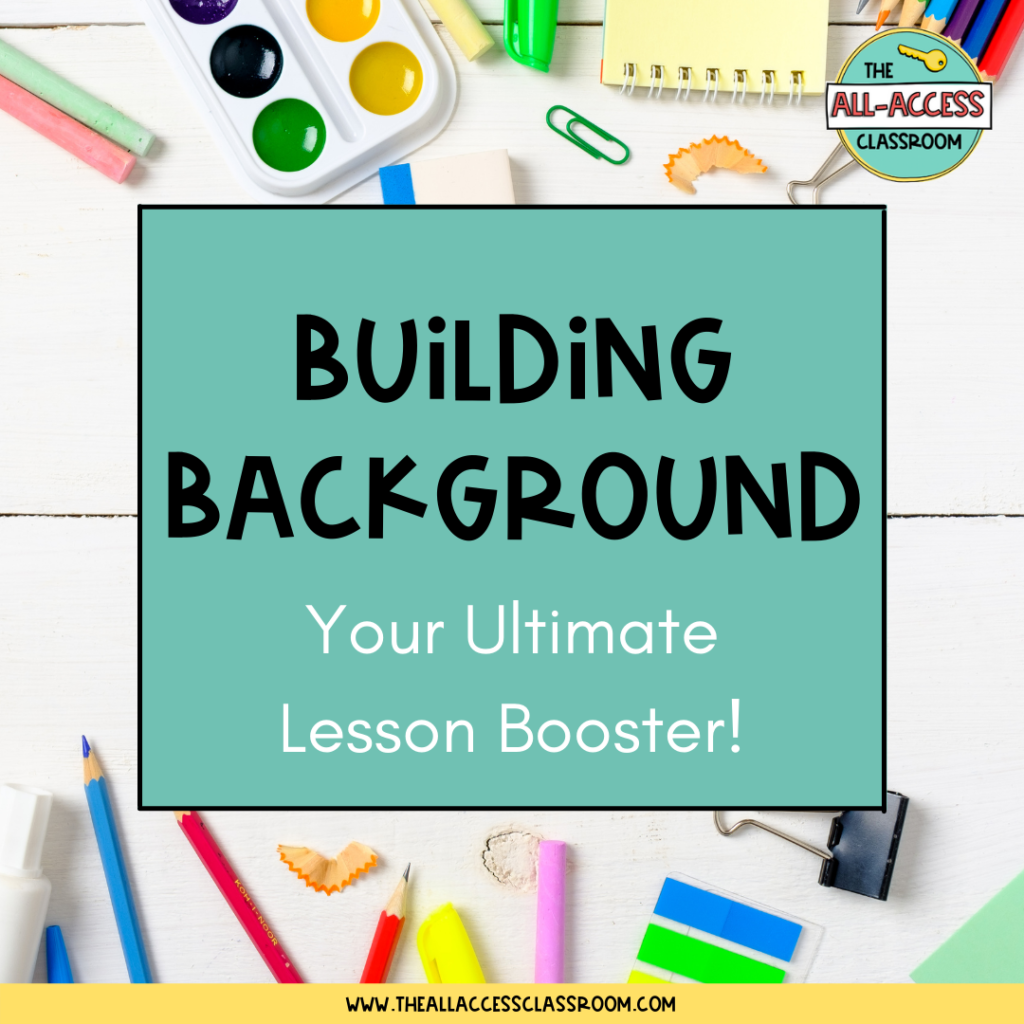
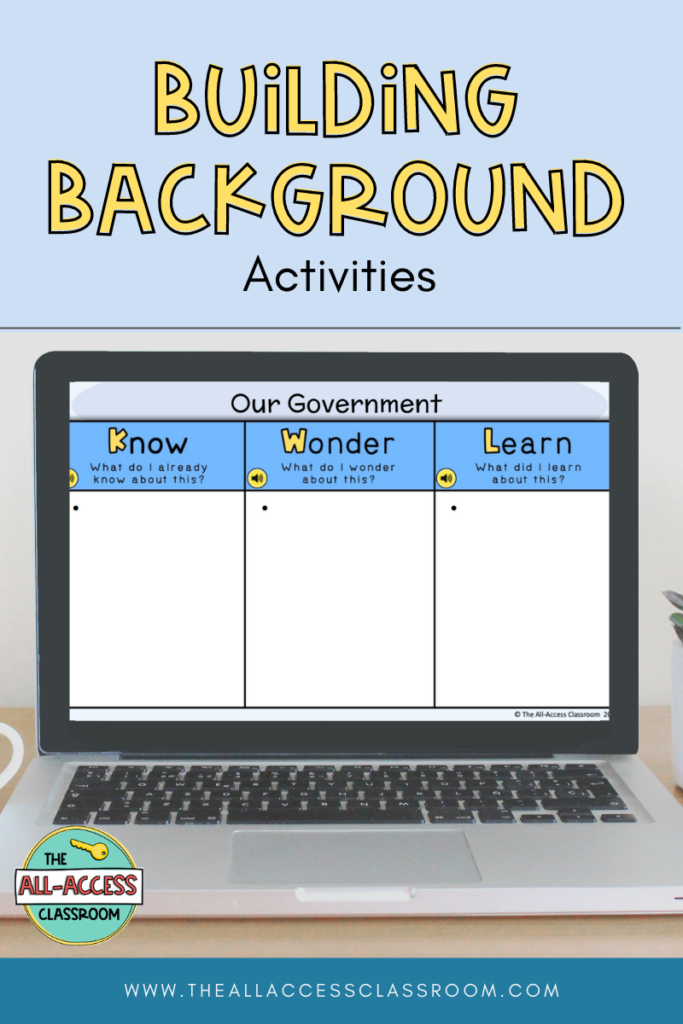
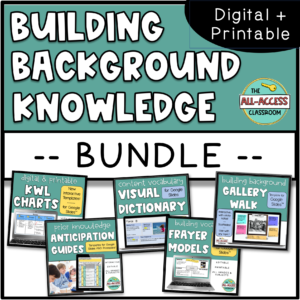

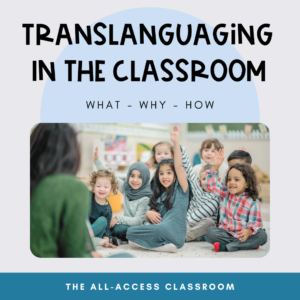
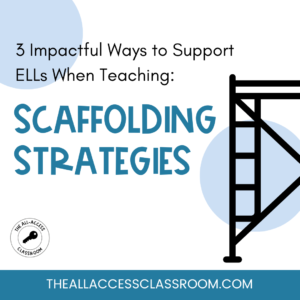
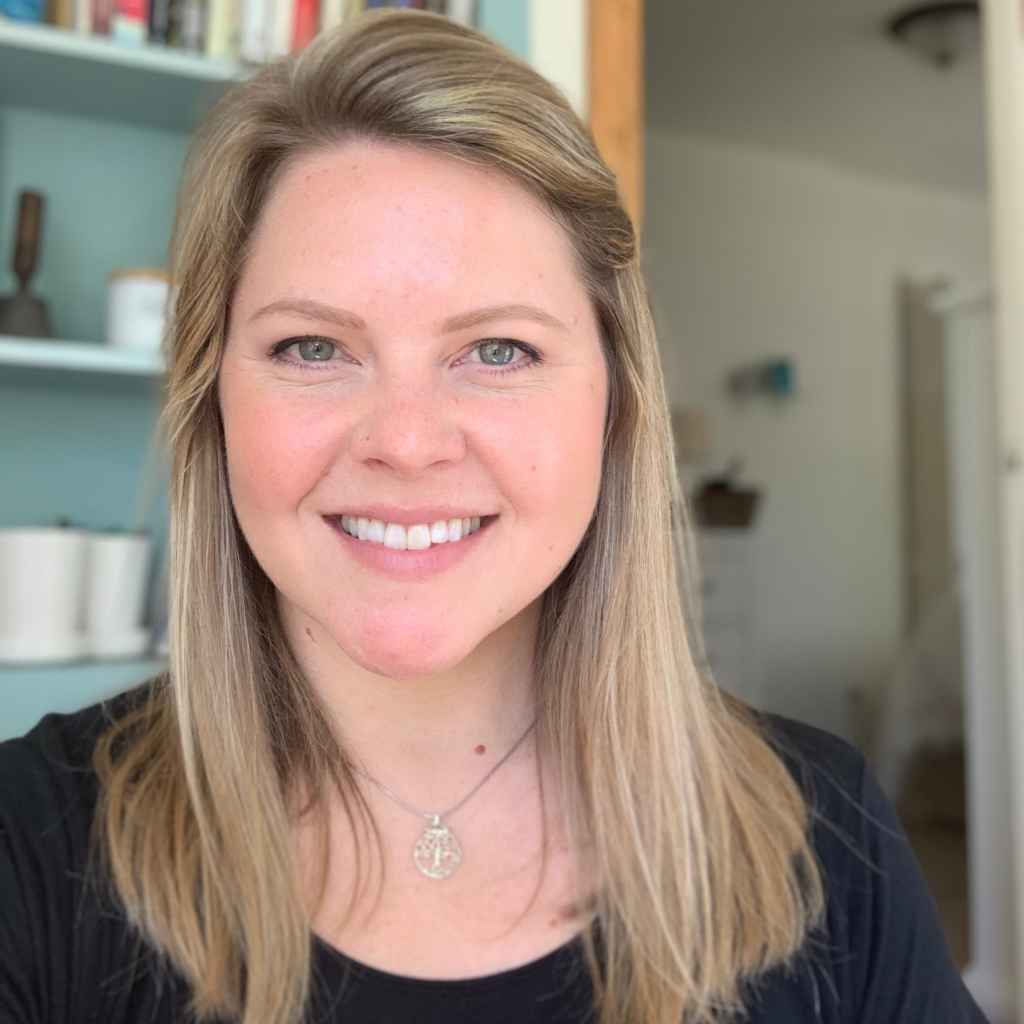
7 Responses
Wow what an awesome site. Our principal forwarded your website to all the teachers and I am so glad she did!
Aw thank you so much, Rhonda! It’s a joy!